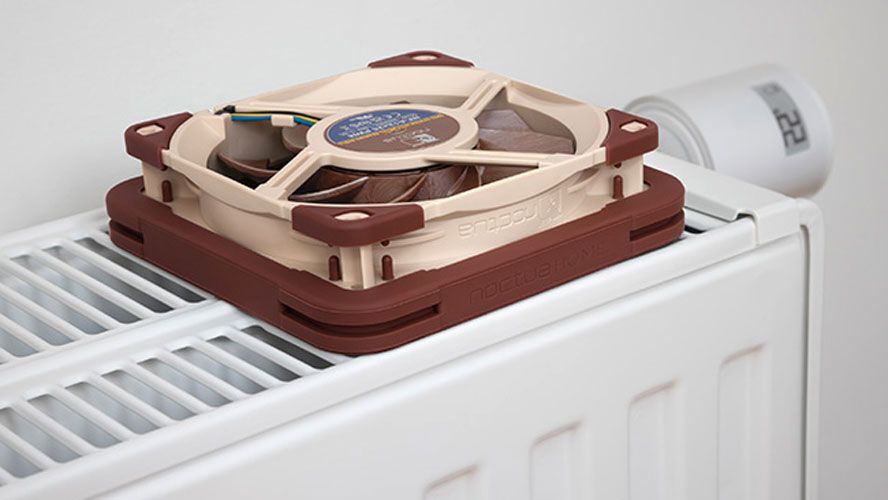Gotta NOC-TUA on that thang!
(I’ll show myself the door)
Well did you, or nah?
Can’t tell. I can never here this things, so damn silent!
Here in the Netherlands we can buy radiator fans much cheaper at any hardware store.
Love Noctua fans but fuck me, the amount of plastic packaging they come in is absolutely obscene
I have this on three radiators in my house. It’s an old phone charger connected to a temperature controlled switch connected to a bunch of old 120mm computer fans. The fans are connected using a couple of 3D printed brackets and some old insulation trim provides anti vibration damping. The phone chargers put out around 9 volt, but sag to around 7 under load. This ensures the fans always start, but don’t turn at full speed to keep the noise down.
Except for the temperature controlled switch I built it all using parts I already had kicking around in my project bins. So fully recycled to prevent waste. The temperature controlled switches are the bi-metal kind, so fully hardware controlled. When the temperature is low they disconnect so use zero power. As soon as the temperature comes up to the set point, they switch on and the fans start. When the temperature drops down, the fans stop. These were $10 for 10 pieces, so a minimal investment.
I don’t have data on how much they help, I have a full home automation system that measures power and gas used, solar produced, temperatures, on times for the heating etc. But in the end there are simply too much variables. However my subjective experience is the fans help the radiators a lot, the heat spreads out way faster. The theory says the fans should help, so I thought I’d give it a go with some old parts.
Currently (well in the summers at least) using a noctua fan attached to a length of 6" diameter duct that’s taped to the output of my portable AC unit to put cold air into a windowless room that doesn’t get much air. Works remarkably well to distribute the air even though the duct is pretty long.
It’s only marginally better. I bet there’s a lot of YouTube videos from nerds that can give you the math.
It’s going to depend a lot on your design and flow, but I recall the free convection coefficient being an order of magnitude smaller, but it’s a linear relationship between energy transfered and the coefficient.
Anecdotally, I have 4 5015 blower fans that move air under the heated bed of my larger 3d printer, easily saw a difference of 10-15c chamber temperatures with those compared with free convection.
It depends.
One of the problems with many radiators is that they heat a relatively small amount of air to a high temperature. Hot air then rises. This creates a warm layer up a ceiling height but leaves it cooler at lower levels. By using forced airflow, you can heat a larger amount of air to a lower temperature. This results in a more even distribution of heat.
This is also why ceiling fans can help in the winter. They can stir the hot air back down into the rest of the room.
The only flaw I can see here is the fan’s direction. It’s pushing hot air up. A radiator cover that redirects it sideways would make a significant difference.
Depends in radiator design. Forced connection will generally transfer more heat than natural convection in an open system like this. This depends on whether the fan is actually pushing more air than would move under natural convection, and how much. There’s other considerations such as radiator material, surface finish and color, etc. which may throttle the effect.
I can’t speak for that specific fan but in general a fan boosts heating by a lot. It was a game changer for me.
I think that having an energy-recovery ventilator would probably provide a larger effect if heating costs are high.
It’s a start





